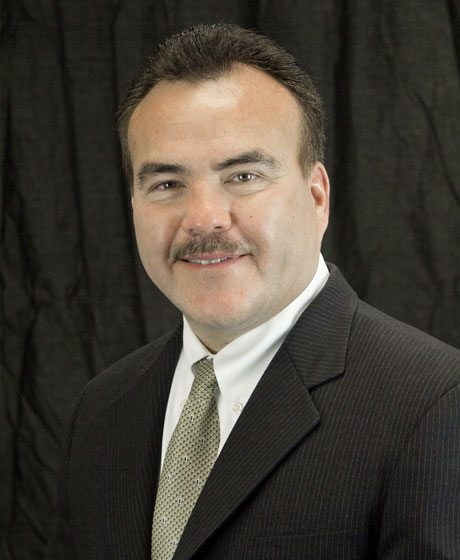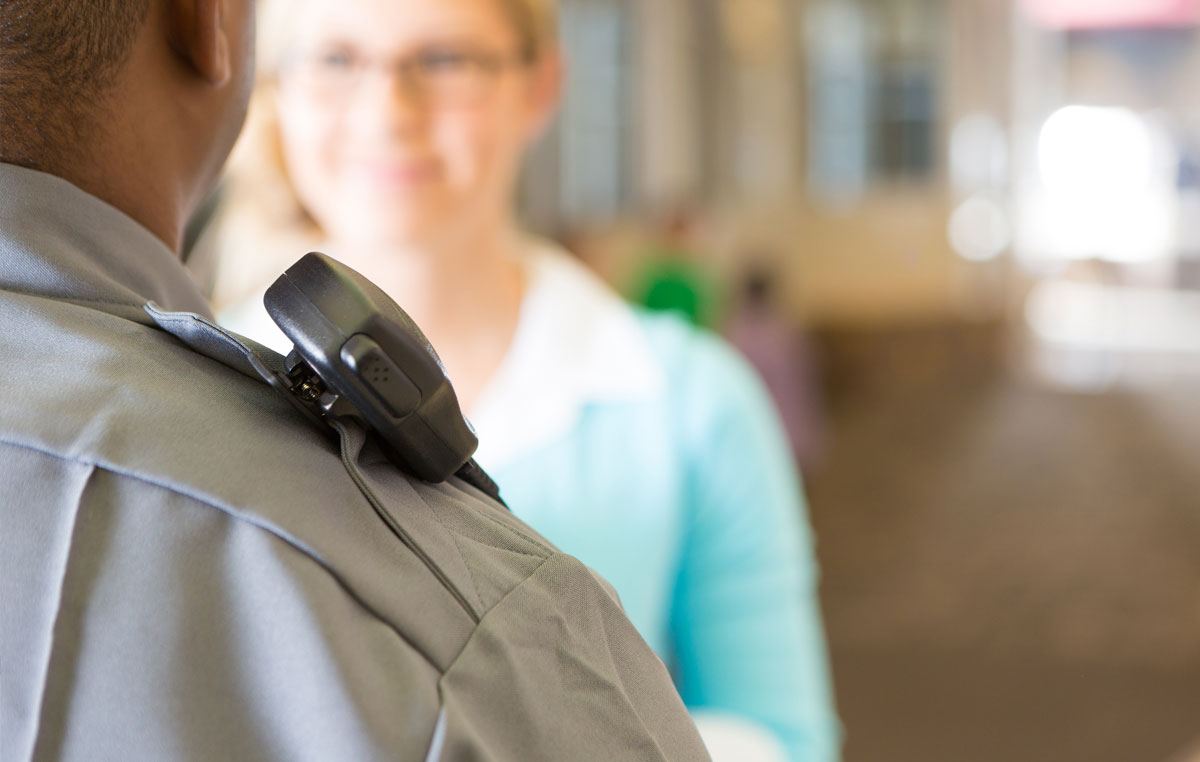
A conversation with …
San Bernardino COE Superintendent Theodore “Ted” Alejandre
s San Bernardino County Superintendent, Alejandre works in collaboration with school districts, other agencies, families and our community partners to provide leadership, advocacy and services to ensure innovative educational practices. Last year, an elementary school in one of his districts experienced a domestic-violence related shooting.
California Schools interviewed Superintendent Alejandre, who was a featured session speaker on school safety at CSBA’s July Leadership Institute, about his thoughts on creating a safe school environment and handling a time of crisis.
What are the different elements that contribute to a safe and supportive school environment?
First of all, I think it is really important to have a positive, welcoming climate. When you establish that kind of a climate that has trusting relationships between adults and students, as well as respecting all students, then you have that full support for supporting and protecting the school. Also, having a caring and compassionate staff that demonstrate overall concern for students is key. You also have to have expectations and policies for student and staff behavior including things like zero tolerance for disruptive behaviors that are violent and for weapons. You have to have clear expectations in place for not tolerating bullying, harassment and intimidation. There also need to be clear and current safety plans for every school.
How can governance teams, such as superintendents and school boards, make sure school safety is a priority?
One of the main things we need is the appropriate funding for deferred facility maintenance so that buildings are kept up well, and to promote safety on campus. I think that governance teams need to emphasize safety for students and staff, have clear expectations and be able to model those positive behaviors so students can follow those. Another key thing that governance teams can do that individual schools might not have the leverage or the networks to do, is facilitate partnerships with law enforcement, first responders and community stakeholders. When you have that collective support, it really provides an overall environment to support school efforts.
An elementary school in your county experienced a tragic school shooting last year — can you tell us a little about that? How did the school respond at the time of the shooting?
It was a domestic incident where an ex-husband of a teacher came in and shot and killed the teacher and a student was shot as well. I don’t think he intended to shoot the student, but because the shooting happened in the classroom, it impacted the student. I think what the school did right at the time of the shooting was they had a very timely response to ensure the safety of staff and students. There was an immediate school lockdown and then evacuation of students once it was deemed safe. They worked closely with district officials, the police department and the sheriff. There was a nearby university that they were able to move the students to to ensure their safety and a place where parents could safely pick up those students. Another thing they did that we have used as a model is that they communicated to stakeholders — parents, employees, district personnel and the media — very quickly, very accurately and ongoing. Everybody was informed as to what was taking place. The follow-up, which often goes unnoticed but is so important, was the crisis support provided to staff, students and families, and the entire school community through counselors and other types of support organizations.
How did the district and county assess the response after the incident? What practices were put in place?
One thing the district did that the county was involved in was have a community after-action review. They gathered all involved sectors — including schools, parents, law enforcement, community and government agencies — to review the response and follow-up action that took place. They obtained input in that review to incorporate into plans moving forward. There have been some changes, including some physical changes at the school site, there were discussions about staff and students and how best to heal together and support each other, and there has also been software implementation so that visitors can be identified through proper ID and given proper documentation to visit the school.
What process does your county office of education use to update, adopt and install its annual school safety plan, including site-level plans? How do you ensure faithful implementation?
We went through a comprehensive process within our organization to develop individual safety plans for all of our programs — county programs are different from school district programs. We operate two kinds of programs: one is for special education, typically for more severely disabled students, and alternative education and preschool. These programs do often operate on a district school site as well as our own school sites. We make sure each program has an individual safety plan to ensure it is customized to the unique needs of the individual program. We keep those plans current and updated and we realize that for us, as a large county, to really have an effective understanding of all the safety plan elements is a big job, so we recently brought on a safety compliance manager. That person is responsible for making sure the plans are updated, that we have regular and ongoing drills that are coordinated with first responders and law enforcement, and that manager works with the safety committee for our school services branch to make sure that everybody is familiar with and understands the plans.

What investments to existing facilities are needed in order to create campuses that are deemed safe by county office standards and/or your local community?
First of all, they need to have ongoing deferred maintenance so that facilities are kept up and functioning as they should. We made some recent updates at many of our facilities where we’ve incorporated modifications that have secure entryways and access systems so that there are barriers to come into the main areas of the facility so visitors have to be buzzed in. We also have updated some of our communication systems, such as our voiceover IP, to include intercom capabilities so if there are announcements of an emergency nature we can get those out quickly and all of the phones can pick up those messages across the entire facility. I think communication is key, as well as including facilities staff in the planning to make sure the needs our being met at all of our facilities.
How do you balance the need with physical security with concerns about the school environment and school culture?
I think many people understand that organizations like ours have to have an added layer of safety. All of our receptionists are trained to provide welcoming and friendly service toward guests that come in, and we try to decorate and ensure that there are openly appealing visuals once people are in the building so that they know that there is a welcoming environment. Even though you have some of those initial barriers that can take away from a welcoming environment, I think you can offset that with some of the aesthetics and signs and communications and so on, so that visitors know that we are trying to be welcoming. I think through all of our facilities where we’ve incorporated means to protect students and staff, the first responders to the public — whether it be the receptionist, the custodian or other staff — really understand the importance of greeting people in a friendly and open manner.
What types of training, educational programs and support services does your district provide to mitigate violence, bullying and discrimination, promote physical and mental health, and meet the social-emotional needs of students and staff?
Internally, we have policies and procedures that are in place that are continually addressed with staff through meetings and online training. We also have non-discrimination and anti-harassment policies that are reviewed annually with all employees. One of the biggest programs we provide to our students and staff to address their social and emotional needs is PBIS — Positive Behavior and Intervention Support Systems. That has been very helpful in creating positive, nurturing environments at school sites. We also have multi-tiered systems of support, which include PBIS, and other types of training for staff so students have those kinds of support systems in place. Every year, the county office holds a Southern California Regional Wellness Conference where we bring together teachers, counselors and administrators with law enforcement, probation officers and social workers for an entire week to cover many different elements of training. We also have a partnership with the sheriff’s department called the San Bernardino Drugs and Gangs Taskforce, and we meet on a monthly basis to address issues that are important to stakeholders. We offer monthly speakers on timely issues in the community. Many people come to listen to these presentations about issues we feel are connected to our community.
I also meet with district superintendents regularly and we showcase best practices. Those have involved safety, social-emotional support and items on the state Dashboard like attendance and suspensions. It has been very helpful to have districts be able to learn from each other.
This interview has been edited for length and clarity.